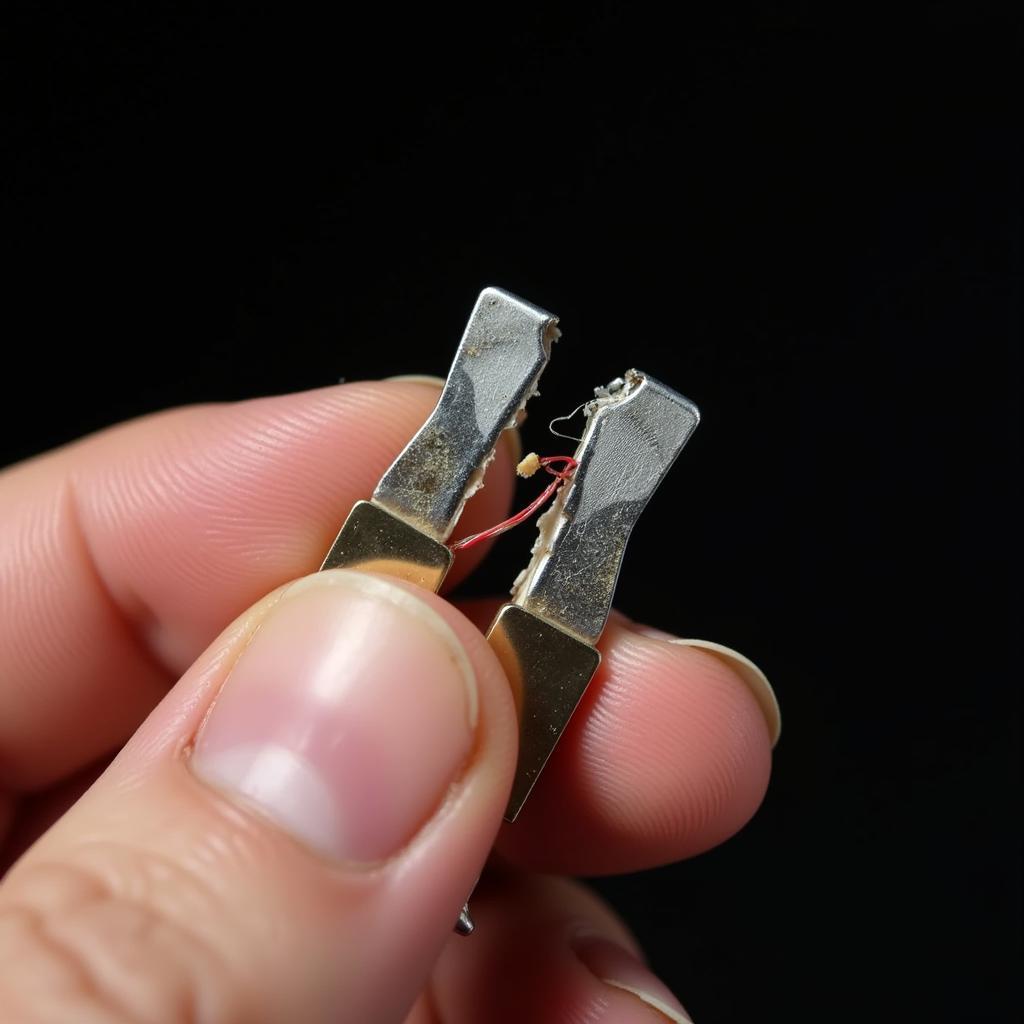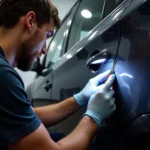A broken cigarette lighter can be a nuisance, especially if you rely on it to power devices in your car. Whether you use it for charging your phone or powering a GPS, knowing how to repair a broken cigarette lighter can save you time and money. This guide will walk you through the troubleshooting and repair process, helping you get your car’s 12V outlet back in working order.
Common Causes of a Broken Cigarette Lighter
Before diving into the repair process, it’s essential to understand why your car cigarette lighter might be malfunctioning. Several common culprits can cause this issue:
- Blown Fuse: The most frequent reason for a non-working cigarette lighter is a blown fuse. Fuses are designed to protect your car’s electrical system from overloads.
- Faulty Socket: The socket itself can wear out over time, especially with frequent use. Corrosion, loose connections, or damaged components within the socket can prevent it from functioning correctly.
- Wiring Problems: Damaged or loose wiring connected to the cigarette lighter socket can interrupt the power supply.
- Cigarette Lighter Element Issues: If you’re using the actual cigarette lighter element, the heating coil might be broken or worn out.
 Blown Car Fuse Close Up
Blown Car Fuse Close Up
Diagnosing the Problem
Diagnosing the root cause is the first step in repairing your broken cigarette lighter. Here’s a systematic approach:
-
Check the Fuse: Locate your car’s fuse box (usually under the dashboard or in the engine compartment). Consult your owner’s manual to identify the correct fuse for the cigarette lighter. Remove the fuse and inspect it visually. A blown fuse will have a broken filament.
-
Test the Socket: If the fuse appears intact, use a multimeter to test the voltage at the cigarette lighter socket. With the car’s ignition turned on, touch the positive probe of the multimeter to the center contact of the socket and the negative probe to a ground point. A reading of around 12 volts indicates a working power supply to the socket.
-
Inspect the Wiring: If the fuse and voltage are okay, visually inspect the wiring connected to the socket. Look for any signs of damage, loose connections, or corrosion.
-
Examine the Cigarette Lighter Element: If you’re using the cigarette lighter element, check if the heating coil is intact and not broken.
How to Fix a Broken Cigarette Lighter
Once you’ve identified the problem, follow these steps to repair it:
-
Replacing a Blown Fuse: Simply replace the blown fuse with a new one of the same amperage rating. Never use a higher amperage fuse, as this could damage the wiring.
-
Repairing the Socket: If the socket is faulty, you might need to replace it. This often involves removing the surrounding trim panel to access the socket’s connections. Disconnect the wiring and install a new socket.
-
Fixing Wiring Problems: Repair any damaged or loose wiring by soldering or using connectors. Ensure all connections are secure.
-
Replacing the Cigarette Lighter Element: If the heating coil is broken, replace the entire cigarette lighter element.
 Replacing Car Cigarette Lighter Fuse
Replacing Car Cigarette Lighter Fuse
Preventing Future Cigarette Lighter Problems
Here are a few tips to prevent future issues with your car’s cigarette lighter:
- Avoid Overloading the Socket: Don’t plug in devices that draw excessive power. Use a dedicated power adapter for high-power devices.
- Handle the Lighter with Care: Avoid rough handling of the cigarette lighter and its socket.
- Regularly Check the Fuse: Periodically inspect the cigarette lighter fuse for any signs of damage.
Conclusion
Repairing a broken cigarette lighter in your car can be a simple DIY project. By understanding the common causes and following the diagnostic and repair steps outlined in this guide, you can get your cigarette lighter working again quickly. Remember to always prioritize safety and consult your car’s owner’s manual for specific instructions.
FAQs
-
Why is my car cigarette lighter not working? The most common causes are a blown fuse, faulty socket, wiring problems, or a broken heating element in the lighter itself.
-
How do I find the fuse for my car cigarette lighter? Refer to your car’s owner’s manual. It will identify the location of the fuse box and the specific fuse for the cigarette lighter.
-
Can I replace the cigarette lighter myself? Yes, in most cases, replacing the fuse or even the socket is a straightforward DIY task.
-
What if I replace the fuse and it blows again immediately? This suggests a short circuit or another electrical issue, requiring professional diagnosis.
-
Is it safe to use the cigarette lighter for charging devices? While convenient, using the cigarette lighter for charging can put strain on the socket. Consider using a dedicated 12V adapter for frequent charging.
-
How much does it cost to repair a car cigarette lighter? The cost varies depending on the problem. A simple fuse replacement is inexpensive, while replacing the socket or repairing wiring could cost more.
-
What tools do I need to repair a car cigarette lighter? You might need a fuse puller, multimeter, screwdriver, pliers, and potentially soldering equipment for wiring repairs.
 Testing Car Cigarette Lighter with Multimeter
Testing Car Cigarette Lighter with Multimeter
“A properly functioning cigarette lighter isn’t just about convenience,” says automotive expert, Michael Stevenson, “It’s about having a reliable power source in your vehicle for various devices, and maintaining the overall electrical integrity of your car.” Ignoring a malfunctioning cigarette lighter can sometimes lead to bigger issues down the road, so addressing it promptly is always the best course of action. As Sarah Miller, a seasoned auto electrician, advises, “Don’t underestimate the importance of small electrical components like fuses. They are crucial for preventing damage to more expensive parts of your vehicle’s electrical system.”
For further assistance, contact us via WhatsApp: +1(641)206-8880, or Email: [email protected]. Our customer support team is available 24/7. You might also find our other articles helpful, such as “Troubleshooting Car Electrical Problems” and “Understanding Your Car’s Fuse Box”.


